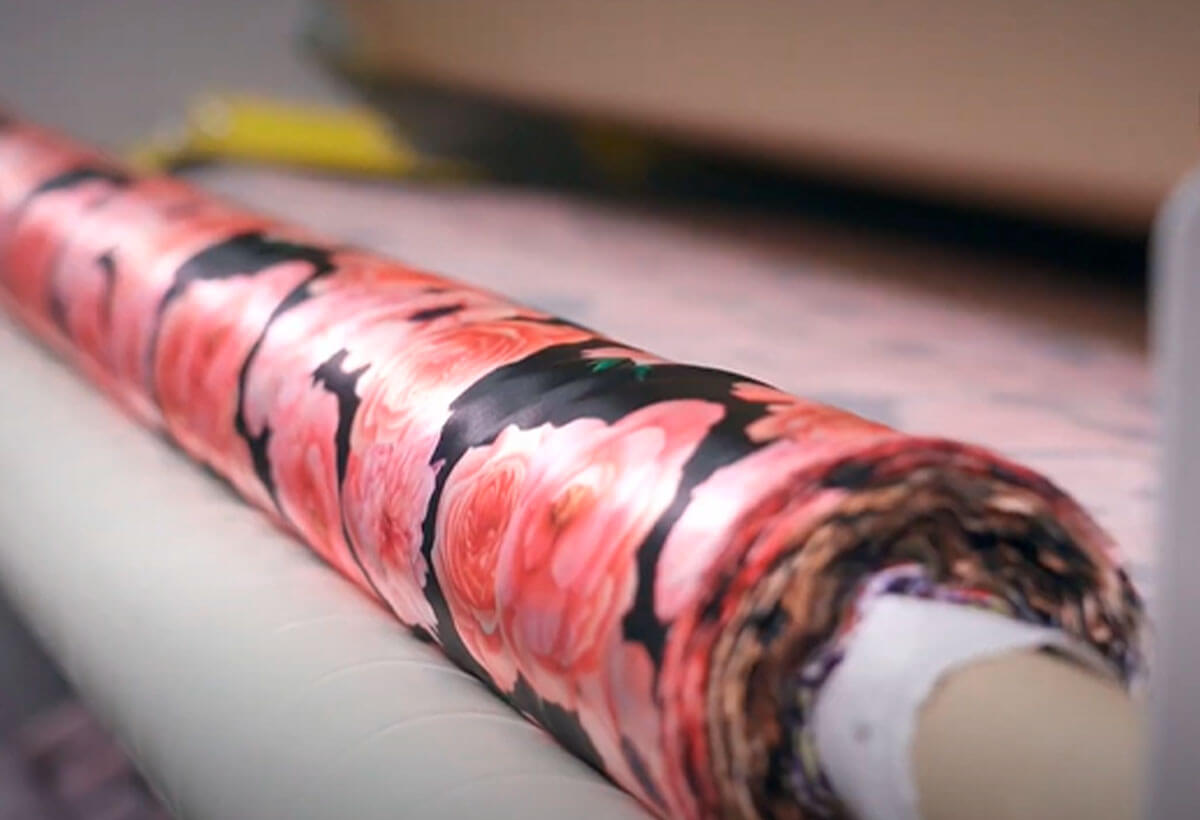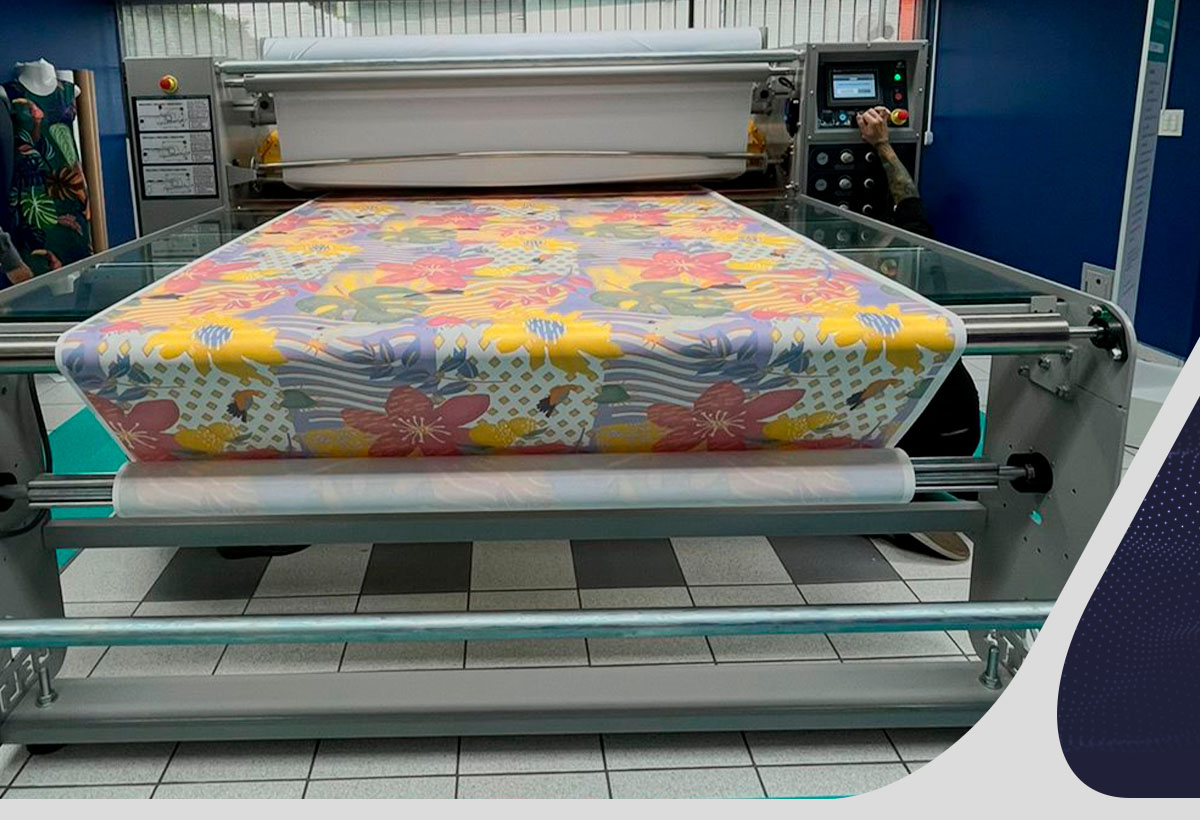In today’s consumer-driven market, where demand is continuously evolving, mass customisation has emerged as one of the predominant trends in the textile sector.
In this scenario, different printing technologies have gained space by offering more agility, quality and flexibility to production. These include sublimation printing, a versatile and strategic technique.
With that in mind, we’ve compiled everything you need to know about this process! Read on to find out!
What is sublimation printing?
Sublimation printing is a process that utilizes a special paper to transfer an image onto fabric. To achieve this result, the sublimation ink is first heated from a solid to a gas, enabling it to effectively penetrate the fabric fibers.
The great advantage of this technique is its durability. This process ensures that the print does not fade over time or with washings. After all, the paint will be on the fabric and, yes, inside it.
In addition, it does not generate extra relief or texture, and promotes more vivid, detailed and high-definition colors.
No wonder, it is widely used in the development of sportswear, uniforms, promotional items and decorations.
Unlike screen printing, sublimation, for example, is faster, cleaner, and more sustainable. Since it does not use water in dyeing, it does not generate paint waste and is perfectly adaptable to on-demand and large-scale production, with automation.
>> Read also: 5 applications of textile automation for your industry
What are the essential textile machines for sublimation printing?
In large-scale textile production, sublimation printing requires the use of robust, accurate, and integrated equipment.
That’s why each stage needs specific textile machines to promote quality, productivity and repeatability. They are as follows:
-
Industrial sublimation printers
It is responsible for printing the design (pattern) on the sublimation paper (which will make the transfer). It must be adequate with the volume of production. That’s why it’s important to assess the width, speed, resolution, and ink compatibility.
>> Read also: What is fabric grammage?
-
Heat Press
It is the machine that heats the ink and transfers it to the fabric. However, it is a more manual solution and should therefore only be used for small-volume or on-demand production.
-
Sublimation Calender
It is the most efficient textile machine for sublimation printing. It also transfers the paint to the fabric through heat. However, unlike the press, here the process is continuous and more automated.
The Sublimation Calender has a heated cylinder and a traction system to promote thermal transfer. In addition, it tends to have more precise temperature control and uniform pressure, eliminating any type of error and failure.
Therefore, it is the most suitable solution for large-scale and continuous production with roll fabrics.
How does the sublimation printing process work?
To better understand the viability of sublimation printing, it is essential to understand how it works.
With this in mind, we’ve created a short, step-by-step guide to the main stages. Keep reading to find out more.
-
Printing on transfer paper
Once the design is created, the print image must be transferred to sublimation paper. For this, the paint must also be sublimactic.
The print is inverted and transferred horizontally to ensure optimal transfer onto the fabric.
Therefore, here, you must depend on the support of specific sublimation printers.
-
Positioning on the fabric
Next, position the printed paper properly on the fabric to be printed.
Here, accuracy is crucial to prevent misalignment and, consequently, rework.
-
Heat Transfer
This process occurs simultaneously with the previous one. After all, the fabric needs to be placed in a heat press or calender to heat the entire package (paper + fabric).
These tools enable the ink to evaporate and seep into the fabric fibers, ensuring proper adhesion.
The choice of the best solution at this stage depends on how much your production is willing to expand. This is due to the press’s extended duration for sublimation printing, as previously observed. On the other hand, the calendar fosters enhanced agility, precision, and assertiveness due to its automated nature.
>> Read also: Machines for the textile industry: get to know Delta!
-
Cooling and finishing
Finally, the cooling and finishing stage takes place. In other words, following the heat transfer, the paper is removed to allow the fabric to cool.
Only then can it move on to the next stages. In other words, activities like cutting, sewing, and packaging.
Sublimation printing in the textile industry: scalability and automation

Scalability and automation are key factors in the growth of sublimation printing in the textile industry. Currently, the global market is expected to reach US$15.2 billion by 2029.
Previously, this process was only carried out in small productions, such as personalized gifts. Today, with more automated lines, machines, and integrated software, sublimation has effectively met the increasing demand for personalized products.
By eliminating traditional manual steps, it becomes possible to avoid the pressure of tight deadlines, large-scale customization, and high-quality textile products. And, at the same time, produce more without compromising diversity.
In other words, you can more easily and confidently plan different collections. This initiative is poised to enhance the competitiveness and scalability of the textile industry.
>> Also read: Digital textile printing: continuous process and low cost
Keep exploring this topic!
Sublimation printing is a central technique in transforming the textile industry and remains one of the key methods in digital printing.
By integrating textile technology, agility, and personalization, digital sublimation enables meeting new market demands with high definition, durability, and scalability.
If you’re interested in learning more about how this technique can boost your production, cut costs, and meet the demands of the modern consumer, we invite you to explore our comprehensive resources.
Download our exclusive material now and find out how to apply digital printing efficiently.



